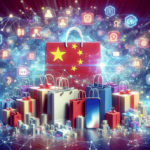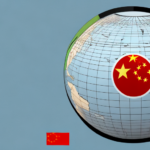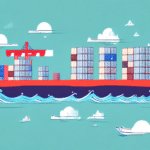Optimizing Your Supply Chain for Chinese New Year (CNY)
As one of the biggest events in the annual calendar, Chinese New Year (CNY) has a significant impact on global supply chains, particularly for manufacturers and retailers that rely heavily on production and sourcing from China. It's crucial for businesses to optimize their supply chain operations to ensure they can meet rising demand and manage supply chain disruptions during this period.
Key Dates to Keep in Mind for CNY
CNY is typically celebrated between mid-January and mid-February. In 2023, it was the Year of the Rabbit, starting on January 22, and in 2024, it will be the Year of the Dragon, beginning on February 10. This holiday period can last anywhere between two weeks to a month, depending on the location and festivities. Therefore, it's essential to plan in advance to minimize the risk of supply chain disruptions and delays caused by this extended holiday period.
During the CNY period, many factories and businesses in China shut down for several days or even weeks. This can cause significant delays in the production and shipment of goods, especially for those who rely heavily on Chinese suppliers. It's crucial to communicate with your suppliers and logistics partners to ensure that you have a clear understanding of their holiday schedules and contingency plans in case of any disruptions. By doing so, you can minimize the impact of CNY on your business operations and maintain a smooth supply chain.
Understanding the Importance of CNY for Your Business
CNY is an essential cultural event in China and other parts of the world such as Taiwan and Hong Kong, where the holiday season can last up to 15 days. For suppliers and manufacturers throughout Asia, this event marks an essential sales opportunity and a time when consumer spending can soar as people shop for gifts, furniture, and food preparations. Therefore, it's vital to understand the cultural significance of CNY and its relevance to your business operations.
One of the most significant aspects of CNY is the tradition of giving red envelopes filled with money to children and unmarried adults. This practice is believed to bring good luck and fortune to the recipients. As a business owner, you can take advantage of this tradition by offering special promotions or discounts during the holiday season to attract customers.
Another important aspect of CNY is the reunion dinner, where families gather to enjoy a feast and spend time together. This presents an opportunity for businesses in the food and beverage industry to offer catering services or special menus for the occasion. Understanding the cultural significance of CNY and its traditions can help your business tap into this lucrative market and build strong relationships with customers during this festive season.
How CNY Affects Your Supply Chain Operations
CNY affects supply chain operations in several ways:
- Production Delays: Many factories close during the holiday period—some for a full week, while others remain shut for up to a month or longer. Additionally, workers travel back to their hometowns to celebrate the festival, affecting their availability and leading to further delays.
- Transportation and Logistics: Transportation and logistics operations can be impacted as carriers take time off or prioritize cargo according to their capacity, leading to potential delays.
- Increased Demand: CNY can lead to increased demand for certain products, such as food, beverages, and gifts, putting pressure on suppliers to meet the surge.
- Quality Control: With many factories operating at full capacity before the holiday, there can be a rush to complete orders, which may lead to quality control issues.
Preparing Your Inventory for the CNY Rush
One way to optimize your supply chain for CNY is by ensuring your inventory levels are sufficient to meet demand, given the production and delivery delays prompted by the holiday period. Here are some strategies:
- Build-Up Inventories: Suppliers can stock up in advance to avoid stockouts, which is crucial when competing against businesses that may be unable to meet customer orders during CNY.
- Review Historical Sales Data: Analyze past sales data to forecast consumer demands and adjust inventory levels appropriately.
- Diversify Product Range: Ensure a diverse range of products to attract a wider customer base and increase sales during the holiday period.
- Cultural Relevance: Offer products that are relevant to CNY, such as red and gold decorations or traditional Chinese snacks.
It is important to communicate with your suppliers and logistics partners to ensure they are aware of your inventory needs and can accommodate any changes in demand during the CNY period. This can help to avoid delays or disruptions in the supply chain, which can be costly during peak sales periods. By taking these steps to prepare your inventory for the CNY rush, you can ensure that your business is well-positioned to capitalize on the opportunities presented by this important holiday.
Managing Shipping and Logistics During CNY
Logistics management is another essential aspect of optimizing supply chains for the CNY period. During this time, carriers may experience a backlog of orders, and managing transport routes can be challenging due to congestion and limited availability. Here are some strategies:
- Advance Planning: Work in advance with carriers to confirm shipping schedules and plan for increased transit times.
- Alternative Shipping Methods: Consider using alternative shipping methods such as air freight to avoid transportation delays and potential damage to goods during transit.
- Ensure Proper Documentation: Make sure all necessary documentation is in order, including customs clearance documents, import/export permits, and other relevant paperwork. Failure to have the correct documentation can result in delays and additional costs.
Therefore, it's crucial to work closely with customs brokers and other relevant parties to ensure that all necessary documentation is in place well in advance of the CNY period.
Effective Communication with Suppliers and Customers During CNY
Effective communication is critical in ensuring supply chain efficiency during the CNY period. Here’s how:
- Establish Clear Expectations: Set clear timelines and guidelines with suppliers and carriers before the holiday season to minimize disruptions.
- Keep Customers Informed: Notify customers of any delays or changes to delivery schedules to prevent cancellations or lost sales.
- Develop Contingency Plans: Have backup plans in place, such as alternative sources of supply or backup transportation options, to ease the impact of potential supply chain disruptions.
Strategies for Maximizing Sales During CNY
CNY represents a significant sales opportunity for many businesses. To leverage this period, companies should:
- Create Promotions and Marketing Campaigns: Align promotions with CNY celebrations, such as offering discounts on popular gifts or creating CNY-specific packaging.
- Optimize Digital Marketing Channels: Use online platforms effectively and engage customers through social media to boost sales during the holiday season.
- Tailor Offerings to Cultural Preferences: Customize products and services to reflect Chinese culture and traditions, enhancing customer appeal.
The Role of Technology in Optimizing Your Supply Chain for CNY
Technology plays a significant role in supply chain optimization, particularly in areas such as inventory management, transportation, and logistics operations. Key technologies include:
- Advanced Analytics and Demand Forecasting: Use predictive analytics to manage supply chain disruptions effectively.
- Tracking Software: Implement real-time tracking to gain visibility into shipping and order fulfillment processes.
- Collaboration Platforms: Use robust platforms to connect suppliers and customers, streamlining communication and improving supply chain visibility and efficiency.
Lessons Learned from Past CNY Experiences
Assessing past CNY experiences can help businesses optimize their supply chains for future holiday seasons proactively. By evaluating what worked and what didn't in previous CNY seasons, businesses can adjust their strategies and improve operations for future periods. Additionally, considering customer feedback and reviewing sales data can help identify high-demand products and enhance product offerings for the next CNY season.
Mitigating Risks and Challenges During the CNY Season
To mitigate risks and challenges during the CNY season, businesses can take proactive measures such as:
- Building Inventory Levels: Ensure sufficient stocks to meet demand despite potential delays.
- Planning Transportation and Logistics Needs: Secure transportation and logistics arrangements well in advance.
- Communicating Plans and Timelines: Maintain clear communication with suppliers and customers about schedules and expectations.
- Maintaining Supplier Relationships: Cultivate strong supplier relationships throughout the year to provide flexibility and reduce supply chain disruptions during CNY.
Building Long-Term Relationships with Suppliers Through CNY Cooperation
Building long-term relationships with suppliers is crucial for optimizing supply chain operations during CNY. By collaborating effectively with suppliers, businesses can:
- Build Trust: Foster trust, which reduces the risk of supply chain disruptions.
- Ensure a Stable Flow of Goods: Maintain consistent supply throughout the year.
- Increase Flexibility: Enable greater flexibility and responsiveness to rapidly changing supply and demand conditions during CNY.
Additionally, building a core of trusted and tested supply chain partners can facilitate better coordination and intelligence in managing supply chain challenges.
Keeping up with Changing Consumer Trends During the CNY Period
Understanding changing consumer trends during the CNY period is essential for successful supply chain optimization. Businesses should:
- Monitor Consumer Behavior Shifts: Analyze how purchasing patterns change during the holiday season.
- Update Inventory and Marketing Strategies: Align inventory levels and marketing campaigns with evolving consumer demands.
- Stay Up-to-Date with Trending Products: Keep an eye on popular products and tailor promotions to reflect these trends, helping businesses stay competitive during the CNY rush.
Exploring New Market Opportunities during the Lunar New Year Celebration
CNY offers not just a time to cater to existing customers but also an opportunity to explore new market opportunities. Businesses can:
- Introduce Their Brand to New Audiences: Promote relevant products and services to attract new customers.
- Align Marketing Strategies with Chinese Culture: Adjust marketing messages to resonate with Chinese cultural norms and traditions.
- Leverage E-Commerce Growth: Utilize China’s expanding e-commerce market to reach a broader audience effectively during the CNY period.
Maintaining Sustainable Practices When Preparing for Chinese New Year
While preparing for CNY, it's essential to keep sustainability at the forefront of operations. Businesses can implement sustainable supply chain practices such as:
- Reducing Waste: Optimize packaging and minimize excess materials.
- Conserving Energy: Implement energy-efficient processes in manufacturing and logistics.
- Using Eco-Friendly Packaging Materials: Choose sustainable packaging options to minimize environmental impact.
By incorporating sustainable practices into their CNY supply chain operations, businesses can provide value to their customers while minimizing their environmental footprint.
Conclusion
Effectively optimizing supply chain operations and mitigating disruptions during the CNY period requires a proactive approach, including strategic planning, collaboration, and effective communication with suppliers and customers. By understanding the cultural significance of CNY, analyzing past experiences, and staying updated with evolving market trends, businesses can gain a competitive advantage during this crucial holiday season. Additionally, by prioritizing sustainability in all operational aspects, businesses can create a positive impact on the environment and better align themselves with the expectations of modern consumers.






















